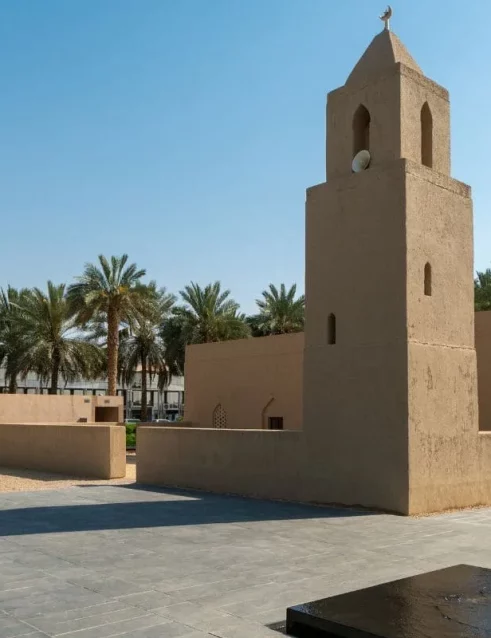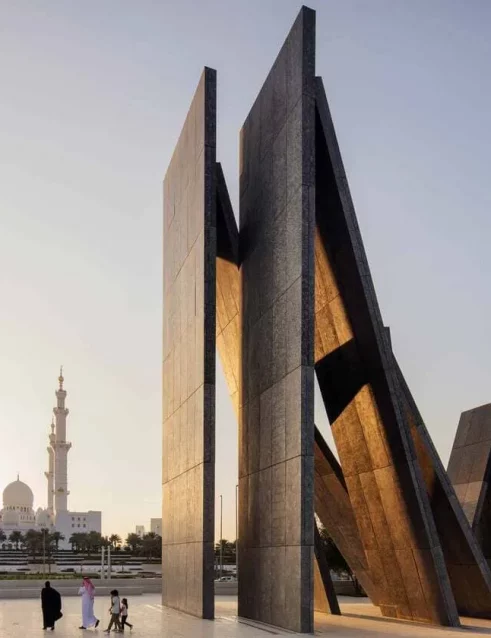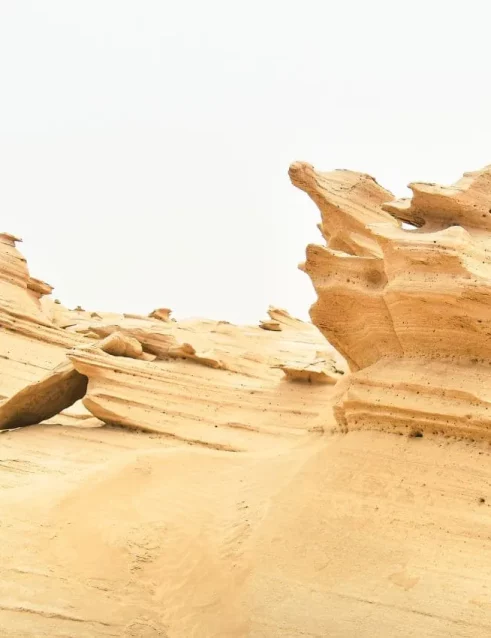Evolution of Architecture in Abu Dhabi: A Journey Through Time and Design
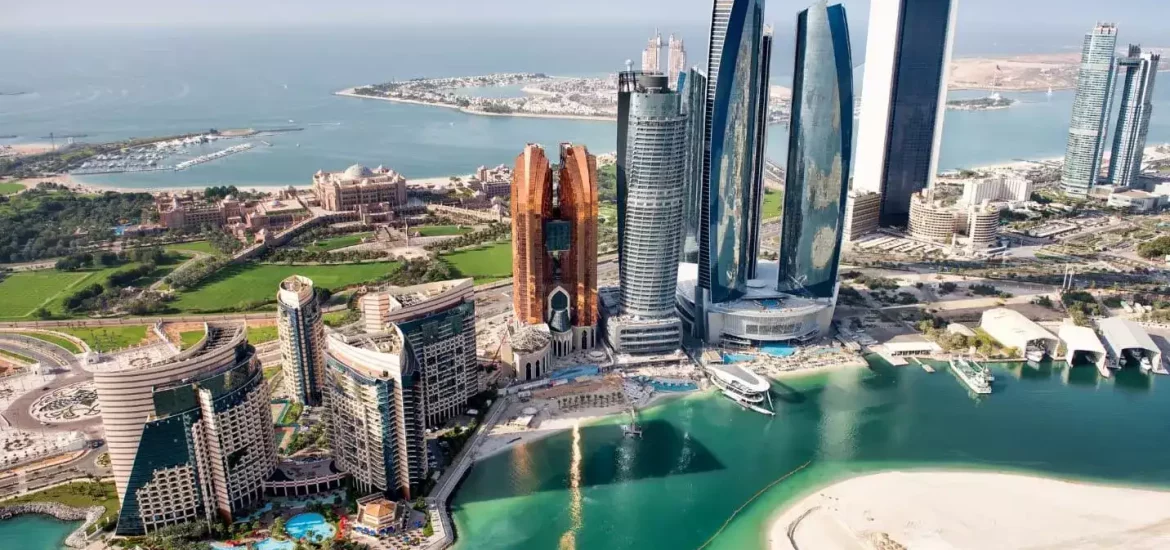
Early Architectural Influences
The architectural landscape of Abu Dhabi in its early days was a reflection of its geographical and cultural context. Before the oil era, the region was predominantly a desert environment, with small coastal settlements focused on fishing and pearl diving. The architectural style during this time was profoundly influenced by Islamic and Arabian designs, marked by a strong emphasis on sustainability and adaptation to the harsh desert climate.
Traditional Materials and Techniques:
The buildings in early Abu Dhabi were constructed using materials readily available in the arid environment. Coral stone, extracted from the sea, was a common building material, providing not only solidity but also a natural cooling effect essential for the hot climate. Mud bricks, made from a mixture of sand, clay, and water, were another staple in construction, offering excellent insulation. Palm fronds, locally known as ‘Arish, were used for roofing, creating structures that were breathable and cool.
Design Elements:
The design of these early buildings was simple yet functional. The structures often featured thick walls, small windows, and courtyards. The walls, being thick, helped to insulate the interiors from the extreme heat. Windows were strategically small and placed high on the walls to minimize the entry of hot air and to enhance privacy, a key element in traditional Islamic architecture. The courtyards served as central gathering spaces for families and played a crucial role in promoting air circulation.

Wind Towers – Barjeel:
A distinctive feature of traditional Emirati architecture was the wind tower, known as ‘Barjeel’. These towers were ingeniously designed to catch and direct the cooler winds into the buildings, functioning as natural air conditioning systems. The wind towers, rising above the roofs, also symbolized the homeowners’ status and wealth.
Cultural and Religious Influences:
The architecture was also a reflection of the cultural and religious practices of the time. Mosques were central to each community, with their architecture embodying Islamic principles and aesthetics. The simple, yet elegant design of mosques with their domes and minarets, not only fulfilled religious functions but also served as landmarks and community centers.
Al Jahili Fort – A Prime Example:
A quintessential example of early architecture in Abu Dhabi is the Al Jahili Fort in Al Ain. Constructed in 1891, this fort was built for defense purposes and as a residence for the local governor. The fort’s robust, earthy structure, made of mud bricks and palm log beams, is a testament to the traditional architectural techniques of the time. Today, Al Jahili Fort stands not only as a historical monument but also as a cultural museum, showcasing the art and history of the region.
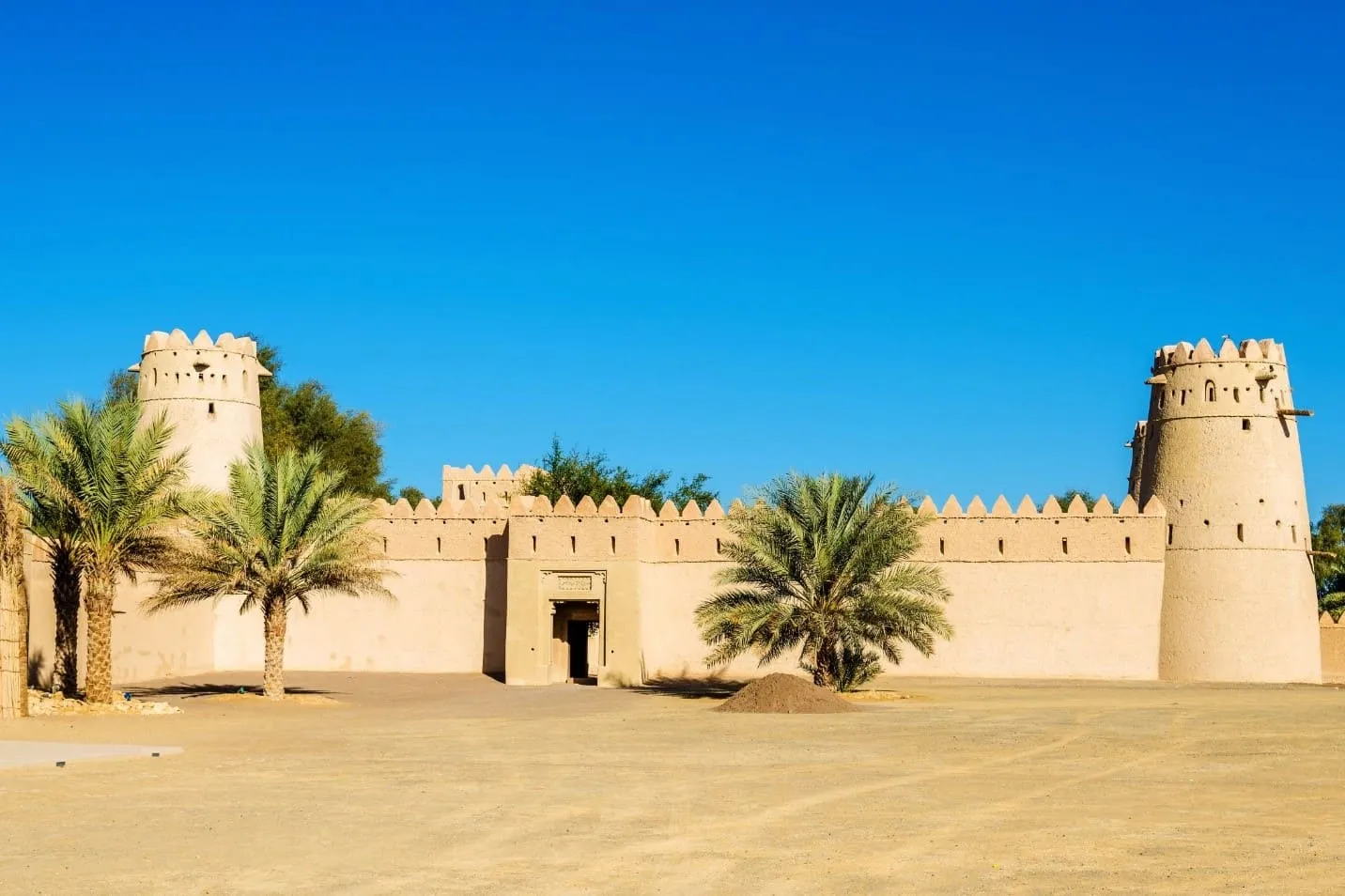
The Oil Boom and Modernization (1960s-1980s)
The discovery of oil in the late 1950s marked the beginning of a transformative era for Abu Dhabi. This period, often referred to as the oil boom, ushered in unprecedented wealth and rapid modernization, significantly impacting the architectural landscape of the region.
Shift in Architectural Style:
The influx of wealth from oil revenues enabled Abu Dhabi to break away from its traditional architectural constraints. The city began to embrace modern materials and construction techniques, reflective of its new global economic status. Glass, steel, and reinforced concrete became the materials of choice, replacing the mud bricks and coral stones of the past. This transition marked a significant shift from the traditional Arabian architectural styles to more modern, international designs.
Cultural Foundation Building – A Symbol of Transition:
A notable example from this era is the Cultural Foundation Building, built in the 1980s. This structure represented a blend of the new and old, combining modern design elements with traditional Islamic motifs. It was an architectural statement of Abu Dhabi’s aspirations, balancing its rich heritage with a forward-looking modernity. The building’s design included geometric patterns and motifs common in Islamic art, integrated into a modern framework.
The Rise of Iconic Skyscrapers (1990s-2000s)
As Abu Dhabi progressed into the late 20th century, its skyline began to transform dramatically, marking the rise of iconic skyscrapers and luxurious developments. This era was defined by a bold architectural ambition to establish Abu Dhabi as a global city.
Embracing Futuristic Designs:
The 1990s and early 2000s saw Abu Dhabi embrace futuristic designs, with the city’s leaders aspiring to create an iconic skyline. This period was characterized by a departure from traditional architectural forms, with a new focus on innovative designs, luxury, and height. Architects and developers were encouraged to think creatively, leading to the construction of some of the most distinctive buildings in the Middle East.
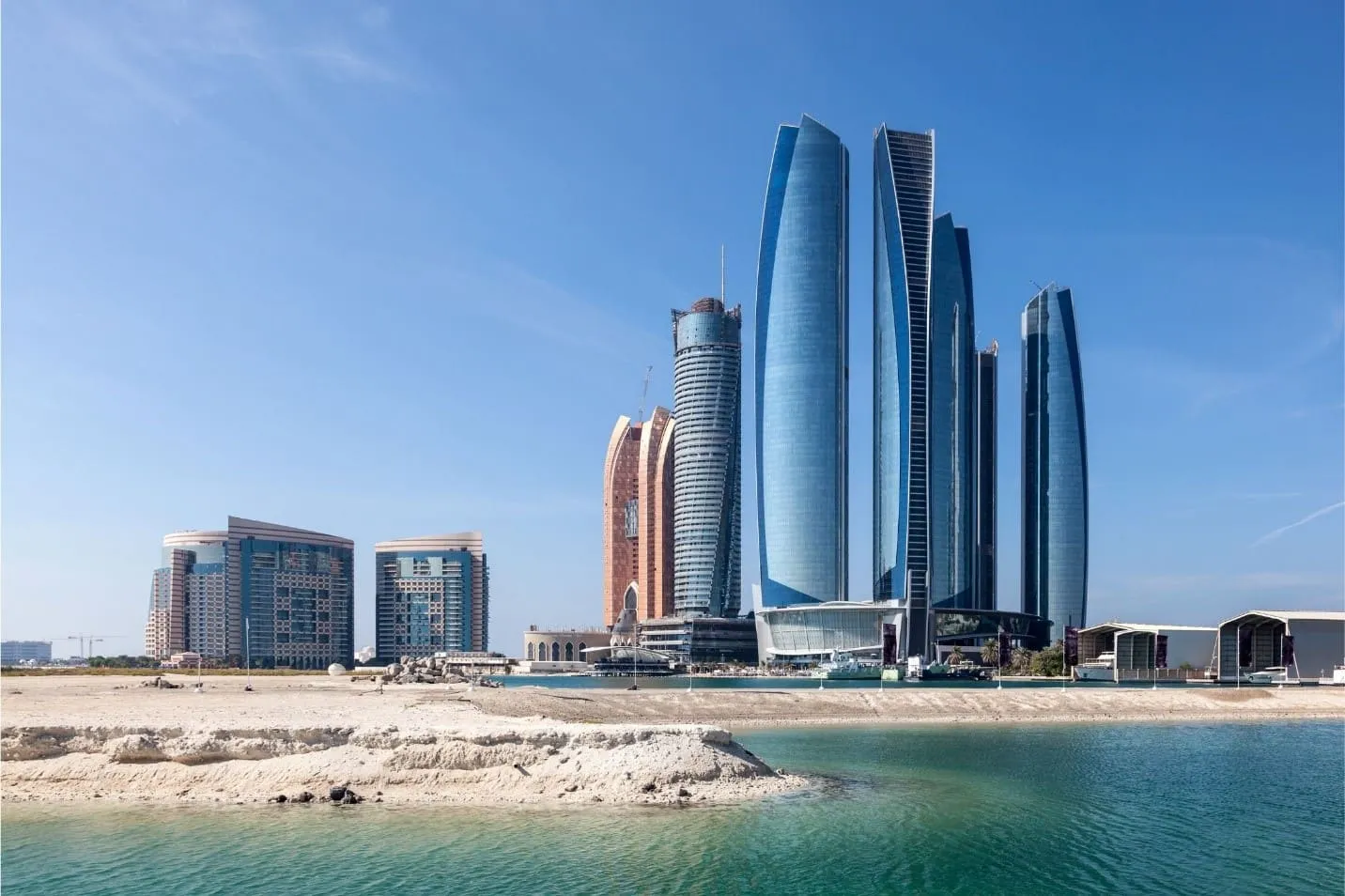
Etihad Towers – A Symbol of Modernity:
A prime example of this era is the Etihad Towers, a complex of five high-rise buildings completed in the early 2000s. These towers, with their sleek and modern design, became symbols of Abu Dhabi’s luxury and economic strength. The tallest of these, Tower 2, stands at over 300 meters, offering panoramic views of the city and the Arabian Gulf. The complex includes residential spaces, offices, a hotel, and a retail area, embodying the multifunctional approach of modern urban design.
Architectural Diversity and Innovation:
This period also saw a significant increase in architectural diversity and innovation. Skyscrapers in Abu Dhabi began to incorporate unique design elements, such as asymmetrical forms, unconventional facades, and state-of-the-art engineering techniques. This not only enhanced the city’s aesthetic appeal but also showcased its commitment to becoming a center for architectural excellence.
21st Century: A Blend of Tradition and Modernity
The 21st century ushered in an era where Abu Dhabi began to harmoniously blend traditional elements with modern aesthetics. This period is characterized by an architectural approach that respects cultural heritage while embracing contemporary design. The Louvre Abu Dhabi, designed by renowned architect Jean Nouvel and opened in 2017, is a crowning achievement of this era. Its intricate, geometric dome, inspired by the interlaced palm leaves traditionally used in local roofing, casts an enchanting ‘rain of light’ and signifies the fusion of tradition with modernity. Additionally, the Sheikh Zayed Grand Mosque, completed in 2007, is another architectural marvel. With its 82 domes, over 1,000 columns, 24-carat gold gilded chandeliers, and the world’s largest hand-knotted carpet, the mosque splendidly combines modern craftsmanship with classic Islamic architecture.

Future Trends in Abu Dhabi’s Architecture
Looking forward, Abu Dhabi is focusing on sustainable architecture and smart city solutions. Projects like Masdar City represent this new direction, aiming to be one of the world’s most sustainable urban environments. This eco-city is designed to minimize cars, maximize walkability, and incorporate renewable energy sources. The city also emphasizes the integration of smart technology in its buildings, aiming for greater energy efficiency and reduced environmental impact.
The architectural evolution of Abu Dhabi is a narrative of a city that has skillfully navigated its journey from a modest fishing village to a global architectural powerhouse. The city’s skyline is a mosaic of historical significance, cultural diversity, and an unyielding pursuit of innovation. It stands as a testament to how architecture can encapsulate the spirit of an era and the aspirations of its people.







